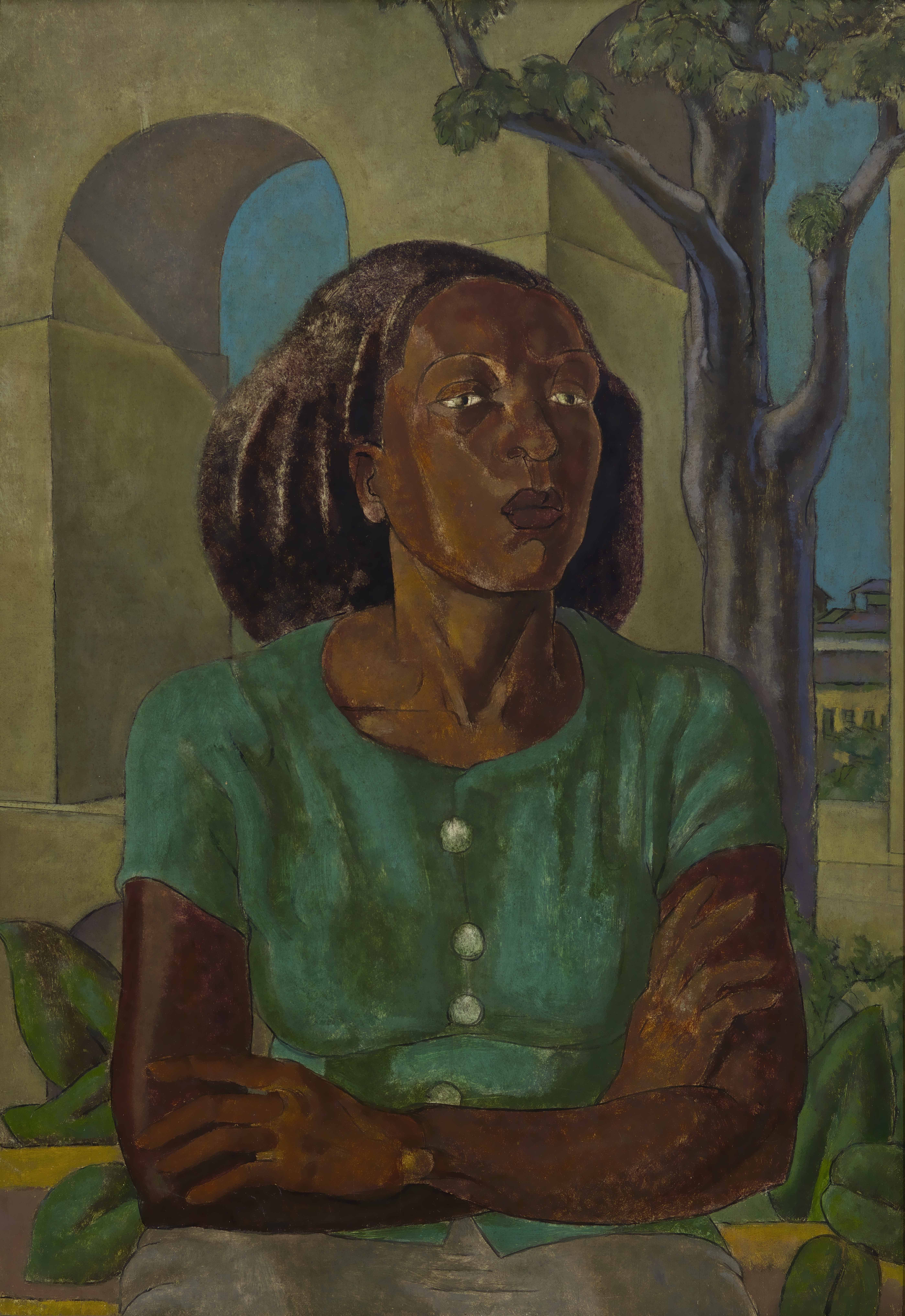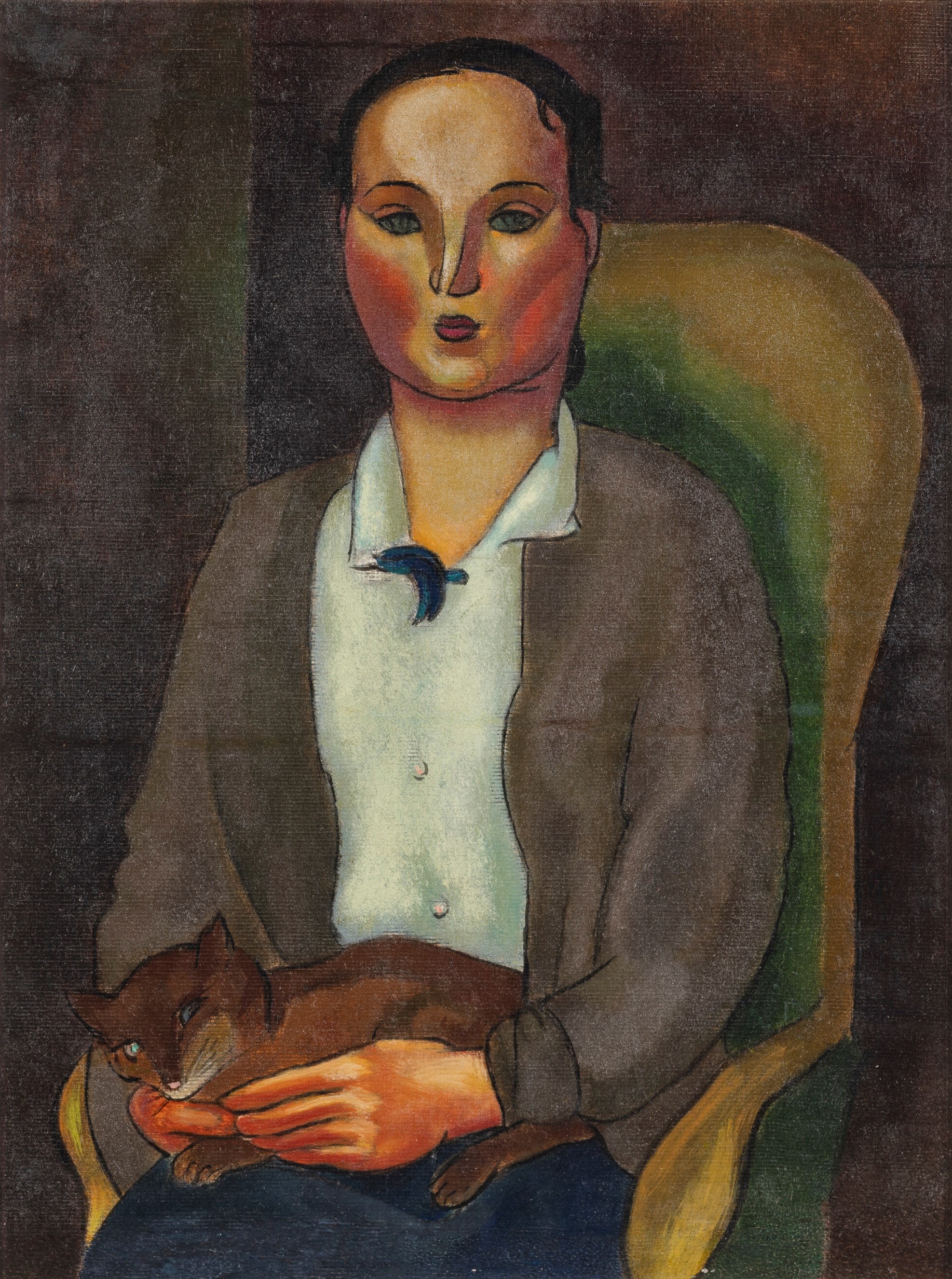Pedro Correia de Araújo
Mulatto Woman and the Arches, 1939
Author:
Pedro Correia de AraújoBio:
Paris, França, 1874-Rio de Janeiro, Brasil, 1955Title:
Mulatto Woman and the ArchesDate:
1939Medium:
Óleo sobre madeiraDimensions:
69,5 x 51 cmCredit line:
Doação Sérgio Werlang, 2018Object type:
PinturaInventory number:
MASP.10753Photography credits:
MASP
Pedro Correia de Araújo came from Pernambuco but studied art in Paris, where he learned to use mathematics in the construction of his works, as we can see in Mulatto Woman and the Arches, in which body and landscape are geometrically arranged. This choice marked the style and precision of his oeuvre. The painting also represents the particular tension created by the artist between, on the one hand, academic techniques, which he had mastered, and, on the other hand, themes of “Brazilian-ness”. It is notable how the body is the place for an intervention of order, becoming a sort of “monument” in contrast with the landscape, which, in this case, is the architectural landscape of the Arches of Lapa. Built in the 18th century in a romantic style, the former aqueduct is the most impressive construction of colonial Brazil. Its structure, composed of 42 double arches, was built by African and indigenous enslaved people. Here, similar to other paintings by the artist, the alleged “Brazilian exoticism” is treated with rigor and distance. In this sense, the work bears renewed witness to the encounter between a hypothetical Brazilian landscape and the narrative of great European pictorial tradition. Mulatto Woman and the Arches is one of the important works of Correia de Araújo’s mature years, when the eroticism that had always been latent in his practice emerges as something rational. It is not simply an attempt to express subjectivity, a path that he disregarded, but it is part of a wider, more ambitious project. This eroticism is not obscured by the aestheticization of the world and objects; it is not a prop or a decoration (which is the case for the mixed race women painted by his contemporary Di Cavalcanti). Instead, the eroticism is part of his geometric matrix, which he also uses to represent his figures, turning the portrayed women into complex figures, full of character, real representations of power and confidence.
— Unknown Authorship




